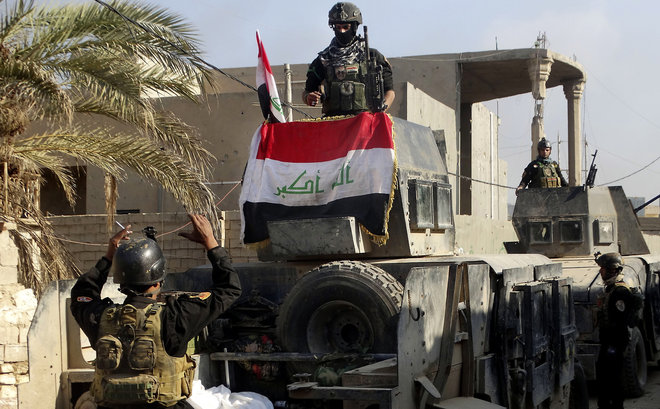-
Tips for becoming a good boxer - November 6, 2020
-
7 expert tips for making your hens night a memorable one - November 6, 2020
-
5 reasons to host your Christmas party on a cruise boat - November 6, 2020
-
What to do when you’re charged with a crime - November 6, 2020
-
Should you get one or multiple dogs? Here’s all you need to know - November 3, 2020
-
A Guide: How to Build Your Very Own Magic Mirror - February 14, 2019
-
Our Top Inspirational Baseball Stars - November 24, 2018
-
Five Tech Tools That Will Help You Turn Your Blog into a Business - November 24, 2018
-
How to Indulge on Vacation without Expanding Your Waist - November 9, 2018
-
5 Strategies for Businesses to Appeal to Today’s Increasingly Mobile-Crazed Customers - November 9, 2018
Iraqi army takes back half of ISIL-controlled territories
Iraqi Prime Minister Haidar al-Abadi arrived in Ramadi on Tuesday, a day after Iraqi forces recaptured the city from Daesh.
Advertisement
“2016 will be the year of the big and final victory, when Daesh’s presence in Iraq will be terminated”, Mr Abadi said in a speech broadcast on state television, using an Arabic acronym for ISIS.
It is customary for the premier to visit newly reconquered cities but he was likely to feel particularly vindicated by the victory in Ramadi, which government forces had lost in May.
In the push to retake Ramadi, the ISF took a page from the U.S. Army’s playbook on urban warfare tactics, employing 21 armored bulldozers to cover the advance, Warren said. He estimates that more than half of the city’s buildings have been destroyed, including government offices, markets and houses.
Iraqi security forces surround the government complex in central Ramadi, 70 miles (115 kilometers) west of Baghdad, Iraq, Monday, Dec. 28, 2015.
Mosul, Iraq’s second largest city, was captured by Daesh in June 2014.
“As far as the downtown Ramadi area, we have not seen significant combat power” from Islamic State forces, Army Col. Steve Warren, a Defense Department spokesman in Baghdad, said Tuesday.
Which seems to be a risky position for the United States to take, since ISIS still dominates the Anbar Province, and Iraqi forces clearly have designs on moving on from Ramadi to try to attack other targets, raising the question of whether the Iraqi military will defend the city any better than they did last time. Government troops are sweeping the city for bombs and booby traps. In an effort to counter them, USA and coalition advisers surged explosive ordnance disposal equipment and additional training to Iraqi forces.
His government plans to hand over Ramadi to local police and a Sunni tribal force once it is secured, to encourage Sunnis to resist ISIS, which is made up of hardline Sunnis. Many of its residents fled the ISIS occupation and the fighting.
Established after the US invasion of Iraq in 2003, it was initially an aggressive raid force, but was needed in a more conventional military role after the Iraqi security forces took heavy losses in their defeat to the Islamic State in Mosul early in 2014, as noted in a report released this year by the Brookings Institution. He estimated that ISF forces killed in action were “in the low double digits, if that”, while the number of ISIS fighters killed was in the hundreds.
“It’s there [Mosul] where Abu Bakr Al Baghdadi declared his caliphate”, Zebari said, referring to the group’s leader.
Advertisement
In Ramadi, meanwhile, Sunni tribal fighters are expected to begin operating in the city’s center to provide security.





























